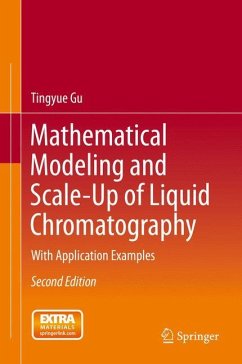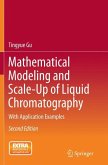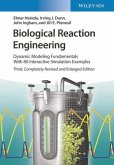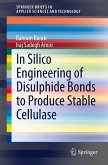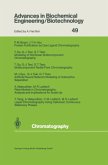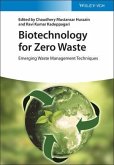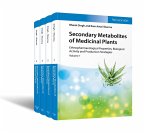Tingyue Gu's second edition provides a comprehensive set of nonlinear multicomponent liquid chromatography (LC) models for various forms of LC, such as adsorption, size exclusion, ion-exchange, reversed-phase, affinity, isocratic/gradient elution and axial/radial flow LC. Much has advanced since the first edition of this book and the author's software, described here, is now used for teaching and research in 32 different countries. This book comes together with a complete software package with graphical user interface for personal computers, offered free for academic applications. Additionally, this book provides detailed methods for parameter estimation of mass transfer coefficients, bed voidage, particle porosity and isotherms. The author gives examples of how to use the software for predicitons and scale-up. In contrast to the first edition, authors do not need to deal with complicated math. Instead, they focus on how to obtain a few parameters for simulation and how to compare simulation results with experimental data. After reading the detailed descriptions in the book, a reader is able to use the simulation software to investigate chromatographic behavior without doing actual experiments. This book is aimed at readers who are interested in learning about LC behaviors and at those who want to scale up LC for preparative- and large-scale applications. Both academic personnel and industrial practitioners can benefit from the use of the book. This new edition includes:
- New models and software for pellicular (cored) beads in liquid chromatography
- Introduction of user-friendly software (with graphical user interface)
- Detailed descriptions on how to use the software
- Step-by-step instructions on parameter estimation for the models
- New mass-transfer correlations for parameter estimation
- Experimental methods for parameter estimation
- Several actual examples using the model for product development and scale-up
- Updated literaturereview
- New models and software for pellicular (cored) beads in liquid chromatography
- Introduction of user-friendly software (with graphical user interface)
- Detailed descriptions on how to use the software
- Step-by-step instructions on parameter estimation for the models
- New mass-transfer correlations for parameter estimation
- Experimental methods for parameter estimation
- Several actual examples using the model for product development and scale-up
- Updated literaturereview
"This book is a welcome addition for those who want to better understand the modeling of nonlinear liquid chromatography. ... The combination of this book with the Chromulator software makes this a good teaching resource for specialized undergraduate or graduate chemistry as well as chemical engineering courses. ... This book is definitely written in the language of chemical engineers, but chemists and other users of chromatography will also appreciate its capacity to improve their understanding of the modeling of chromatography." (Attila Felinger, Analytical and Bioanalytical Chemistry, April, 2016)

